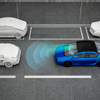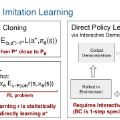While there have been advancements in autonomous driving control and traffic simulation, there have been little to no works exploring their unification with deep learning. Works in both areas seem to focus on entirely different exclusive problems, yet traffic and driving are inherently related in the real world. In this paper, we present Traffic-Aware Autonomous Driving (TrAAD), a generalizable distillation-style method for traffic-informed imitation learning that directly optimizes for faster traffic flow and lower energy consumption. TrAAD focuses on the supervision of speed control in imitation learning systems, as most driving research focuses on perception and steering. Moreover, our method addresses the lack of co-simulation between traffic and driving simulators and provides a basis for directly involving traffic simulation with autonomous driving in future work. Our results show that, with information from traffic simulation involved in the supervision of imitation learning methods, an autonomous vehicle can learn how to accelerate in a fashion that is beneficial for traffic flow and overall energy consumption for all nearby vehicles.
翻译:虽然自动驾驶控制和交通仿真已经取得了很大进展,但深度学习和它们的统一却鲜有作品探索。两个领域的研究似乎专注于完全不同的问题,但现实中的交通和驾驶是本质上相关的。在本文中,我们提出了一种具有普适性的交通感知自动驾驶(TrAAD)的蒸馏式方法,它直接优化了更快的交通流和更低的能耗。 TrAAD集中于模仿学习系统中的速度控制监督,因为大多数驾驶研究集中在感知和转向上。此外,我们的方法解决了交通和驾驶模拟器之间缺乏共模拟的问题,并为将来直接涉及交通仿真与自动驾驶工作提供了基础。我们的研究结果表明,利用交通仿真信息监视模仿学习方法,自动驾驶车辆可以学习如何加速,从而有助于所有附近车辆的交通流和整体能耗。


